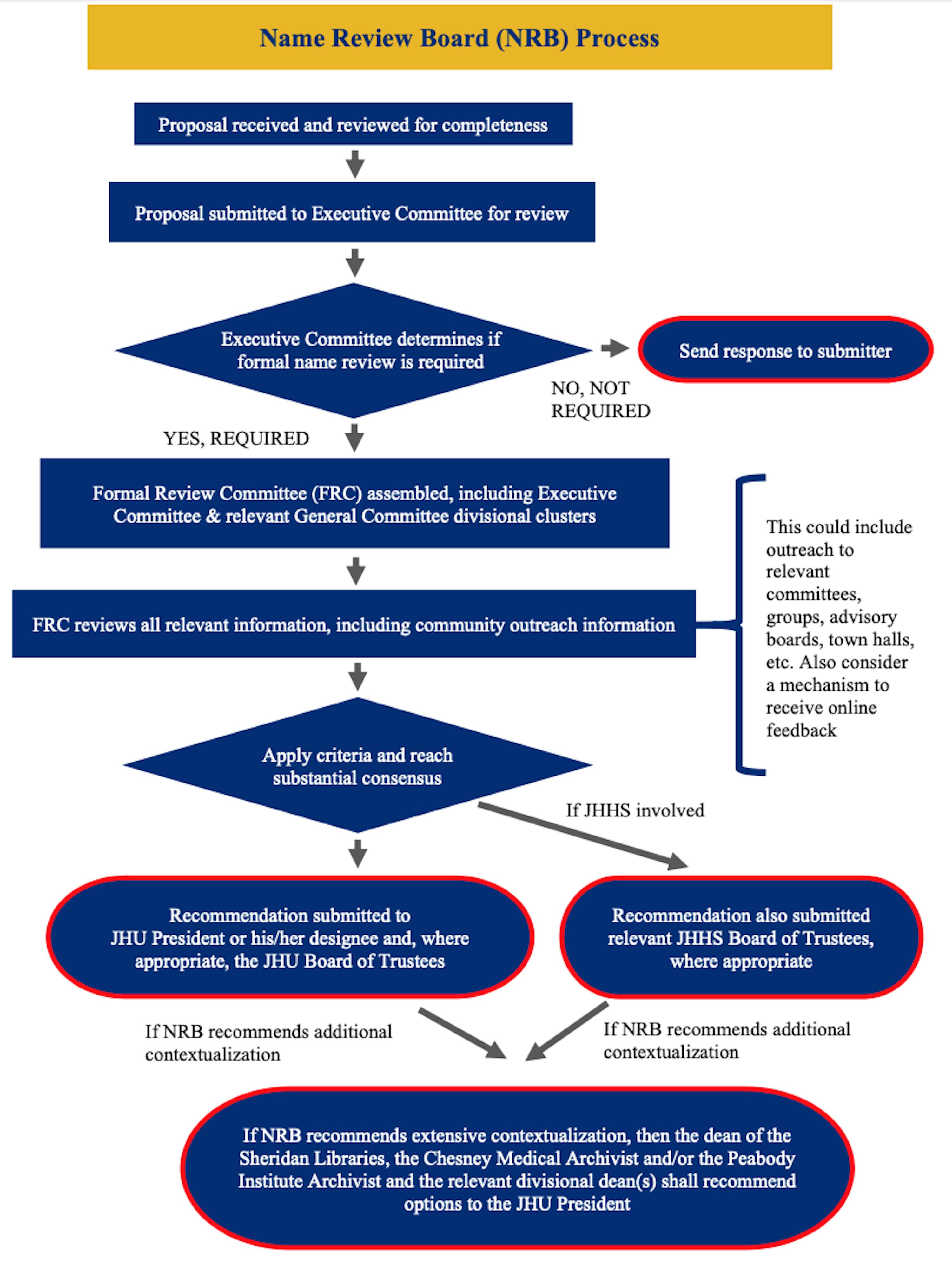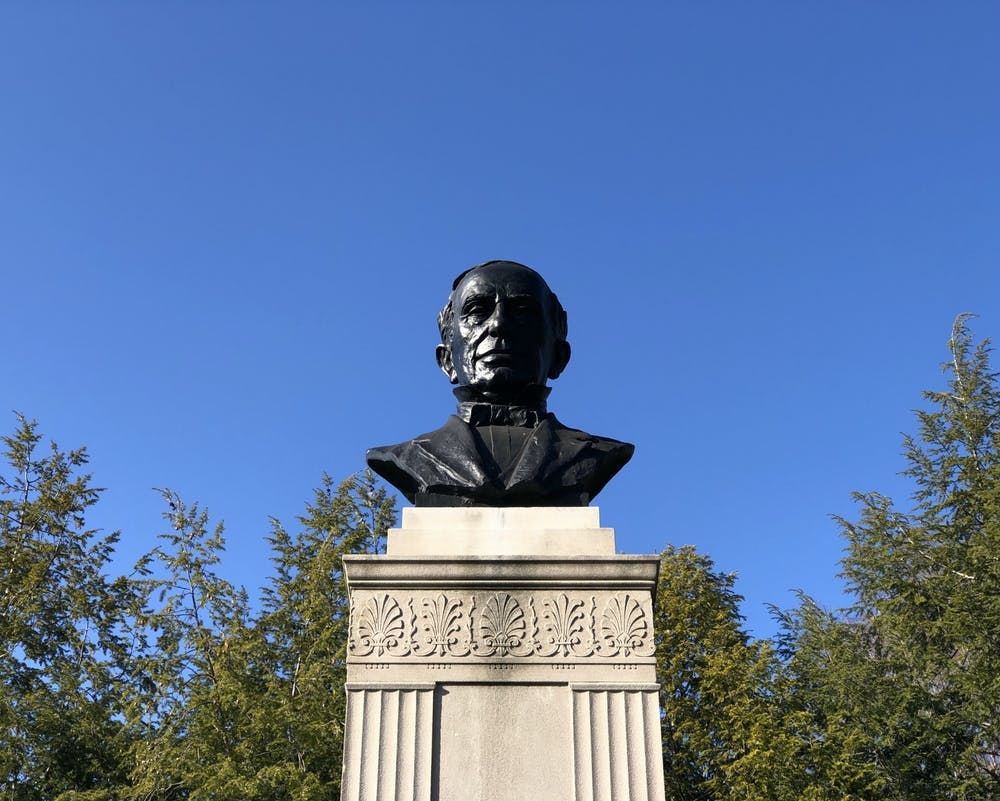The Committee to Establish Principles on Naming released a draft report for feedback on April 6. The report contains guidelines under consideration for renaming, de-naming and the future naming of campus facilities, scholarships and programs whose titles may be tied to racism or inequality.
University President Ronald J. Daniels and Provost Sunil Kumar had announced the formation of the committee last July as part of the University’s 2020 Task Force to review the 2016 Roadmap on Diversity and Inclusion.
The committee’s 22 members include administrators, faculty members, students and trustees.
Junior Adelle Thompson, the sole undergraduate on the committee, emphasized that the resolutions do not solve the University’s history of racism and discrimination.
“The resolutions offered are meant to be starting points. These aren’t end-all-be-all solutions to the pain of past prejudices and injustices against people of color,” she said. “They’re meant to be the beginning of change being made at Hopkins. After listening to the stories of our peer institutions, we decided that we wanted and needed to do more.”
The draft resolutions include the establishment of a permanent Name Review Board (NRB), which will use the University’s values and other criteria to evaluate potential naming, renaming and de-naming actions. According to the report, all Hopkins affiliates can request a name to be changed or removed.
The proposed NRB would contain an Executive Committee of seven members, including one student, one faculty member, one local community one leader, one trustee, and one Sheridan Libraries or Chesney Medical Archives archivist, as well as the vice provost for diversity and inclusion and the vice president for development and alumni relations. An additional General Committee will consist of four-person divisional clusters from across the University.
The NRB will be tasked with reviewing all names and features associated with the University and writing reports for all proposals.
“This examination should be undertaken with a strong awareness that historical records are often incomplete or inaccurate, and that the creation of the scholarly archive involves acts of silencing, bias, and prioritization,” the report reads. “This process should include deliberate and open conversations with engaged stakeholders, and the documentary record of these conversations and the committee’s deliberations are to be made permanently available to the general public.”
In the instance of de-naming, the committee will consider the scope of injury and potential constraints associated with keeping or removing a name.
Additionally, the committee will create a standard of evaluating a person’s “prime legacies,” which recognizes that one person may be part of different, conflicting narratives.
The resolution also proposed additional educational resources to inform the public of the history behind the names of buildings, scholarships and programs. These include permanent exhibits, art installations and lecture series.
“The absence of interpretive information — of context — at the site of a name is a missed opportunity to teach all those who pass by it (as with a building or room) or associate themselves with it (as with a professorship or scholarship) the person or organization honored,” the report reads. “The same missed opportunity may occur when the institution decides to change or remove a name.”
The report proposes that the contextualization process should be overseen by the Sheridan Libraries, the Chesney Medical Archives and/or the Peabody Institute Archives in order to educate or creatively reinterpret names. Archivists will consider whether what “the institution intend[s] to teach by assigning or removing the name.”
The resolution outlined a process for the NRB to follow when evaluating proposals, which can be submitted through an online form. The identity of those who submit proposals will be kept anonymous to anyone outside of the NRB.
Once the Executive Committee deems that there is substantial evidence, it will assemble a Formal Review Committee with the relevant clusters and begin the review process. All proposals, recommendations and decisions will be published on a website, where the public can also provide input on ongoing investigations.

COURTESY OF THE COMMITTEE TO ESTABLISH PRINCIPLES ON NAMING
Thompson noted that the formation of the draft resolution followed numerous meetings, town halls and discussion sessions.
“This is still a work on progress, and I truly believe that there is still a lot of work to be done, but getting started is the hardest part,” she said.
Additionally, listening sessions have been held with members of the Hopkins and Baltimore communities as well as peer institutions.
Electrical and Computer Engineering Professor James West, a member of the committee, reflected on the organization’s accomplishments in an email to The News-Letter.
“It provides the University with a road map to address naming and renaming problems,” he wrote. “I am equally pleased that Hopkins understands that this is a serious problem and that it intends to be vigilant and committed to making this university a friendly place for all students, faculty and staff.”
Feedback on the draft resolutions can be submitted via the committee’s website or emailed to namingcommittee@jhu.edu by April 28.





